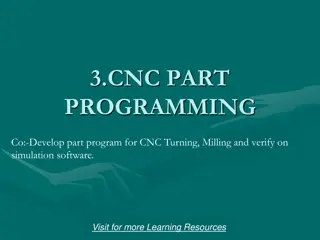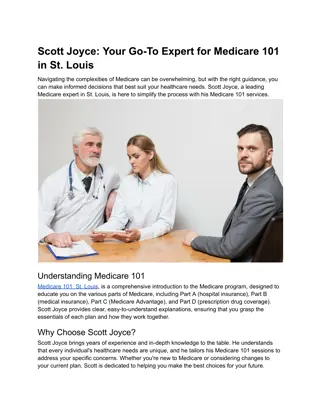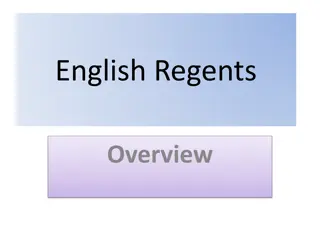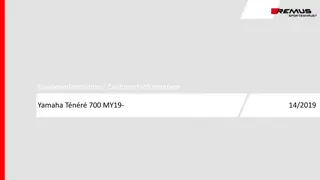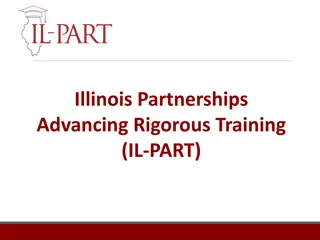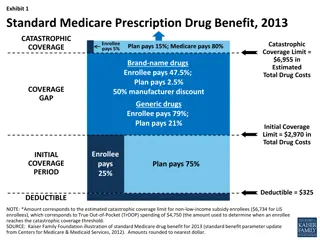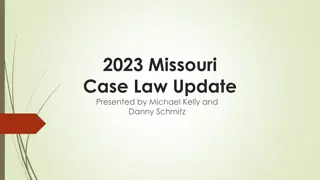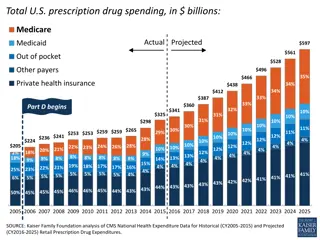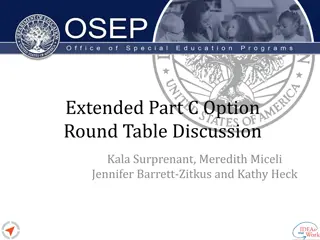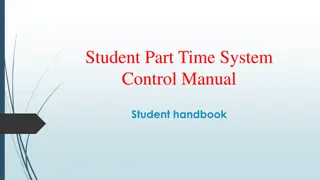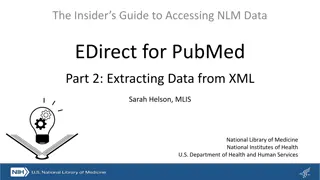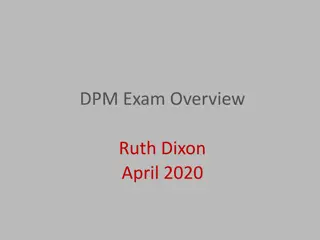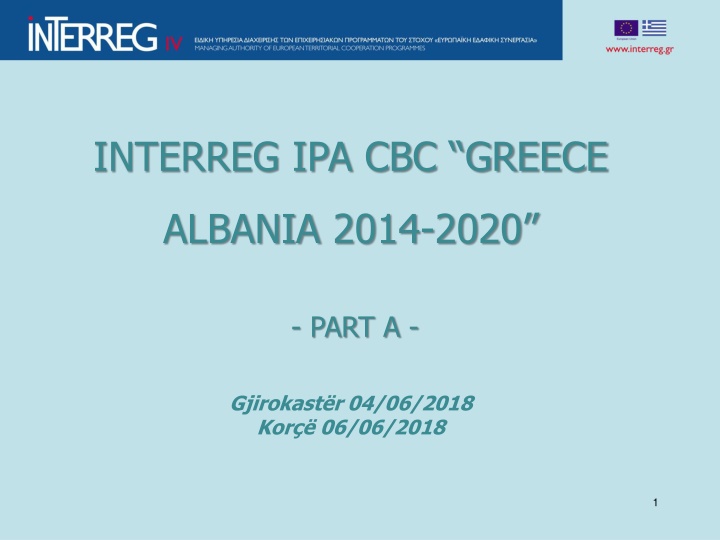
Managing EU Cross-Border Cooperation Guidelines and Procedures
Explore the comprehensive guidelines and procedures for managing EU cross-border cooperation projects between Greece and Albania under the INTERREG IPA CBC program. Learn about financial flows, project lifecycle, verification processes, and regulatory frameworks as outlined by the European Commission. Get insights into managing authorities' functions, implementation manuals, and control mechanisms for effective project execution.
Download Presentation

Please find below an Image/Link to download the presentation.
The content on the website is provided AS IS for your information and personal use only. It may not be sold, licensed, or shared on other websites without obtaining consent from the author. If you encounter any issues during the download, it is possible that the publisher has removed the file from their server.
You are allowed to download the files provided on this website for personal or commercial use, subject to the condition that they are used lawfully. All files are the property of their respective owners.
The content on the website is provided AS IS for your information and personal use only. It may not be sold, licensed, or shared on other websites without obtaining consent from the author.
E N D
Presentation Transcript
INTERREG IPA CBC GREECE ALBANIA 2014-2020 - PART A - Gjirokast r 04/06/2018 Kor 06/06/2018 1
FIRST LEVEL CONTROL GUIDELINES & PROCEDURES 2
PROJECTS LIFE CYCLE - Financial and Information Flow European Commission Community Contribution (85% of total verified budget) Payment Claim Certifying Authority 1st Level Control Declaration of Verified expenditures through the MIS Community Contribution per project Request for the verification of expenditure Verifications/ Certificates Verifications/ Certificates Lead Partner JS/MA Community Contribution corresponding to project partners budget Project partners Payments are made according to project s implementation Project partners 3
General Guidelines (1/8) Regulation (EU) 1303/2013, Article 125 Functions of the Managing Authority Regulation (EU) 1299/2013, Article 23 Functions of the Managing Authority Regulation (EU) 447/2014 (for IPA countries) Regulation (EU) 481/2014, specific rules on eligibility of expenditure for cooperation programmes European Commission Guidance for Member States on Management Verifications (EGESIF_14_12_final - 17/9/2015) Project Implementation Manual 4
General Guidelines (2/8) 1. Centralized System - Public FLC body at national or regional level 2. De-Centralized System - Private FLC body ALBANIA GREECE Centralised System FLC Office at the Ministry for Europe and Foreign Affairs Decentralised System Register of Controllers 5
General Guidelines (3/8) According to Article 125 of Regulation (EU) 1303/2013 The Managing Authority must: (a) verify that: o o the co-financed products and services have been delivered that expenditure declared by the beneficiaries has been paid and that it complies with applicable law, the operational programme and the conditions for support of the operation; o (b) ensure that: o beneficiaries involved in the implementation of operations reimbursed on the basis of eligible costs actually incurred, maintain either a separate accounting system or an adequate accounting code for all transactions relating to the operation 6
General Guidelines (4/8) The verifications should cover in particular: That expenditure relates to the eligible period and has been paid; That the expenditure relates to an approved operation; Compliance with National and Union eligibility and procurement rules; Adequacy of supporting documents and existence of an adequate audit trail; Compliance with State aid rules, sustainable development, equal opportunity and non-discrimination requirements; The respect of EU and National rules on publicity; Physical progress of the operation measured by common and Programme specific output and, where applicable, result indicators; 7
General Guidelines (5/8) According to Article 125 of Regulation (EU) 1303/2013 Verifications shall include the following procedures: a. administrative verifications of operations b. on-the-spot verifications of operations 8
General Guidelines (6/8) Administrative verifications during project implementation All applications for reimbursement by beneficiaries, whether intermediate or final, shall be subject to administrative verifications based on an examination of the claim and relevant supporting documentation such as : 9
General Guidelines (7/8) On the spot verifications EFFECTIVENESS: On-the-spot verifications should be planned in advance to ensure that they are effective, in particular in view of the certification that the expenditure entered in the accounts complies with applicable law. AVAILABILITY: Generally, notification of the on-the-spot verifications should be given in order to ensure that the relevant staff (e.g. project manager, engineer, accountant) and documentation (in particular, financial records including bank statements and invoices) are made available by the beneficiary during the verification. 10
General Guidelines (8/8) ADMINISTRATIVE VERIFICATIONS Management verifications of 100% of the applications for reimbursement submitted by beneficiaries are required by the Regulation CPR. ON-THE-SPOT VERIFICATIONS The intensity, frequency and coverage of on-the-spot verifications is dependent upon: o the complexity of the operation, o the amount of public support to an operation, o the level of risk identified by management verifications, o the extent of detailed checks during the administrative verifications and audits of the AA. 11
Procedures(1/9) FLC Tender Documents Invoices Bank statements Table of verified expenditure Table of verified expenditure Verifications Control Checklist Verification Report Certificate of verified expenditure Beneficiary 12
Procedures(2/9) Common Documents 1. Guidance for Management verifications Beneficiaries & FLCs 2. Table of verified expenditure 3. Verifications Control Check list FLCs 4. Verification Report 5. Certificate of verified expenditure 6. Working Timesheet Beneficiaries 7. Personnel Timesheet 13
Procedures(3/9) Guidance on management verifications 14
Procedures(4/9) Table of verified expenditure Beneficiary s information Contractor s payment documents Beneficiary s payment documents FLC results 15
Procedures(5/9) Verification Control Check list Beneficiary Information Audit trail of Project documents Audit Trail Checklist of expenditure Categories of eligible expenditure Compliance with information and publicity requirements Compliance with public procurement rules Compliance with EU policies Physical Implementation Fraud Indication Recommendations 16
Procedures(6/9) Verification Report Information on project and progress report Information on Designated Controller Verification methodology Expenditure declared and certified by budget line Description of findings during on the spot check Conclusions and recommendations 17
Procedures(7/9) Certificate of verified expenditure Information for the project and progress report Information for the Beneficiary Verification / certified amount 3. Verification Methodology desk-based on-the-spot Date(s) of on-the-spot verification DD.MM.YYYY - DD.MM.YYYY National contribution in EUR Total certified EUR IPA in EUR Amount certified 18
Procedures(8/9) Working Timesheet General Information for the personnel Working hour per day and deliverable Hourly rate Requested amount per deliverable Total requested amount for the specific application for reimbursement Signatures by the employee and the responsible supervising person 19
Procedures(9/9) Personnel Timesheet General Information for the personnel Working hour per day and beneficiary s project Hourly rate Requested amount per project Total requested amount for the specific application for reimbursement Signatures by the employee and the responsible supervising person 20
(1/4) Each Beneficiary (Lead or Project) submits electronically a request for the verification of expenditure to the respecting FLC body of each country, which is accompanied by a file with all proper documentation. The Beneficiary enters the expenditure data in predefined MIS screens that include the project data, but also uploads specific documents, which are in fact the verification file (e.g. tender documents, proof of publicity actions, invoices, payments, receipts etc.). Also, each Beneficiary fills in the Table of Expenditure in a predefined MIS form. In this stage, the MIS conducts a series of logical validation checks (e.g. the declared expenditure of a specific deliverable, or/and a 21 specific type of cost don t exceed the approved budget in the AF).
(2/4) The Controllers proceed to the administrative check of the above file (when it is complete). The Controller fills in the Table of Expenditure in the MIS Screen with the verified and not verified expenditure amounts. The Controller fills in the Verification control checklist in a predefined MIS Screen. Finally, the Controller fills in the VerificationReport in a predefined MIS Screen. The Controller prints for signature the above mentioned 4 documents through the MIS and submit them to the partner, according to Programme 22 implementation manual .
(3/4) The MA/JS, in order a payment application to be done, checks/validates the relevant data which have submitted by the Controller, through a specific MIS Screen. The Certifying Authority will be able to draw, through a specific MIS Screen, the table of eligible verified expenditure per budget line that will include in the following payment application to the European Commission. The payment applications per accounting year, are made on the basis of the validated by the MA expenditure, within the accounting year. 23
(4/4) The submission data MUST be correct, on-time and detailed The submitted data concern: The beneficiary (legal framework, VAT status, declarations, organization chart, methodology of indirect cost calculation, etc.) Project s data (Application Form, Subsidy Contract, Partnership Agreement, declarations, management team definition, etc.) Application s for verification data (tender procurements, contracts, invoices, payments, staff time sheets, etc.) 24
Procedures for Greek Partners(1/2) The first time, the Beneficiary submits to the Unit C of the MA a complete file of the paid-out expenditure and supporting documentation. From the second submission for expenditure verification and onwards, the beneficiary submits all documentation to the selected controller and cc to Unit C of MA The Beneficiaries shall submit their applications for expenditure verification at least every semester/trimester and preferably whenever the expenditure exceeds 15.000 25
Procedures for Greek Partners(2/2) The Controller, within 5 working days from the day he/she receives the electronic file (or 7 working days after the end of the on-the-spot verification) shall issue and submit to the Beneficiary by e-mail, copying to Unit C, the relevant FLC documents The Beneficiary can submit an objection within five (5) working days after receiving the aforementioned documents The Controller, within five (5) working days after receiving the objection, examines the objection and the accompanying documentation and submits the final Verification Certificate 26
UNIT C VERIFICATION OF EXPENDITURES MANAGING AUTHORITY OF EUROPEAN TERRITORIAL COOPERATION PROGRAMMES Tel: +30 2310 469 600, 469 620, 469 614, 469 622, 469 672 Fax:+30 2310 469 602 e-mail: kxristodoulou@mou.gr, dkaravatos@mou.gr, tsalonidis@mou.gr , dvoutira@mou.gr 27

![❤[READ]❤ Robotic Exploration of the Solar System: Part I: The Golden Age 1957-19](/thumb/21623/read-robotic-exploration-of-the-solar-system-part-i-the-golden-age-1957-19.jpg)




